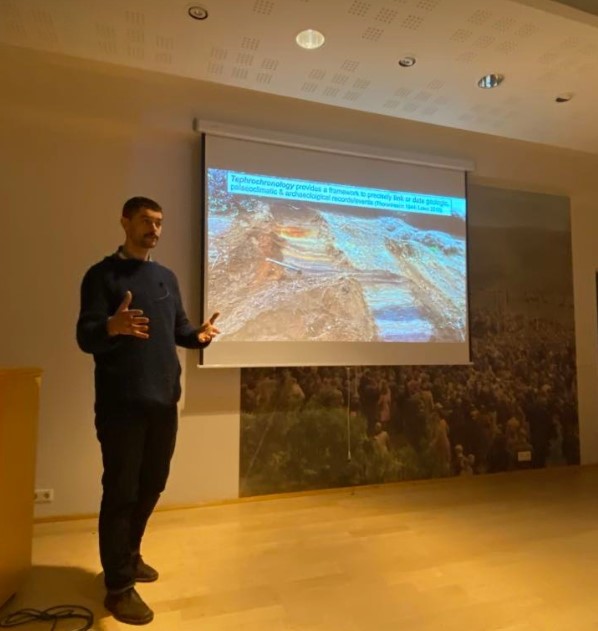Samples have been collected from sediment layers in 52 Icelandic lakes over the past months as part of a study by HM Queen Margrethe II's and Vigdís Finnbogadóttir's Interdisciplinary Research Centre on Ocean, Climate and Society (ROCS). "This is the most thorough investigation of lake sediment to date and will provide a vital insight into historical ecosystems," says Wesley Randall Farnsworth, postdoctoral researcher at ROCS, who has been working on the project.
ROCS has also organised a public symposium taking place in Veröld today at 12 pm, which will go into further detail about the work of the Research Centre and opportunities for collaboration with other Icelandic institutions. The symposium is open to all.
Mapping whole ecosystems and the impact of human behaviour
ROCS was established in spring 2020 by the Carlsberg Foundation in collaboration with the Icelandic government to mark Queen Margrethe II of Denmark's 80th birthday and the 90th birthday of Vigdís Finnbogadóttir, former President of Iceland. It is an interdisciplinary research centre, intended to improve understanding of the relationship between climate change and marine ecosystems and their significance for Icelandic society and culture.
ROCS operates under the auspices of the both the University of Copenhagen and the University of Iceland and is led by Katherine Richardson, a professor at the University of Copenhagen, in collaboration with Danish and Icelandic scientists. The Research Centre currently employs six postdoctoral researchers, with backgrounds in the humanities, social sciences and natural sciences, as well as a number of researchers from the University of Copenhagen, the University of Iceland and research institutes in both Denmark and Iceland
The stated mission of ROCS is to map entire ecosystems and explore how they have developed in the context of climate change. The focus of their research has been the ocean around Iceland and scientists have taken a research cruise on board the Marine Research Institute's vessel Árni Friðriksson in order to collect sediment cores from the sea bed off the Icelandic coast. Using new technology, they are able to explore historical climate change and gather various information about the history of the marine and coastal biosphere by analysing ancient environmental DNA (eDNA) in the cores. Initial findings were published earlier this year, indicating that the sediment cores are up to 40,000 years old.
The history of our planet is based on interaction between the geosphere and the biosphere. "Later, humans became a geological force in themselves: the anthroposphere," explains Katherine Richardson, professor at the University of Copenhagen and leader of ROCS. "ROCS works to understand the boundaries between these three spheres. So far, we have all been working in our own isolated worlds of research. But it is not possible to understand how things work without understanding the relationships between them."

At the borders of the geosphere, the biosphere and the anthroposphere
At a ROCS meeting, which recently took place in Reykholt, participants shared research findings with their colleagues as well as discussing plans for future projects. The meeting laid the foundation for closer interdisciplinary collaboration between researchers from the natural sciences, the humanities, oceanography and geology.
"If everyone is busy concentrating on climate, we forget that what makes our planet is life," says Richardson. She explains that the mission of ROCS is first and foremost to create understanding of how different systems interact on Earth. The history of our planet is based on interaction between the geosphere and the biosphere. "Later, humans became a geological force in themselves: the anthroposphere," she says. "ROCS works to understand the boundaries between these three spheres. So far, we have all been working in our own isolated worlds of research. But it is not possible to understand how things work without understanding the relationships between them."
ROCS has organised a public symposium today in Auðarsalur in Veröld, from 12 pm to 2 pm. The symposium will present the main findings of recent ROCS research. Representatives from affiliated institutions, such as the Marine Research Institute and the Icelandic Museum of Natural History, will also be present to discuss the benefits of collaboration with ROCS.
All are welcome at the symposium and you can find out more about the programme on the UI website.




